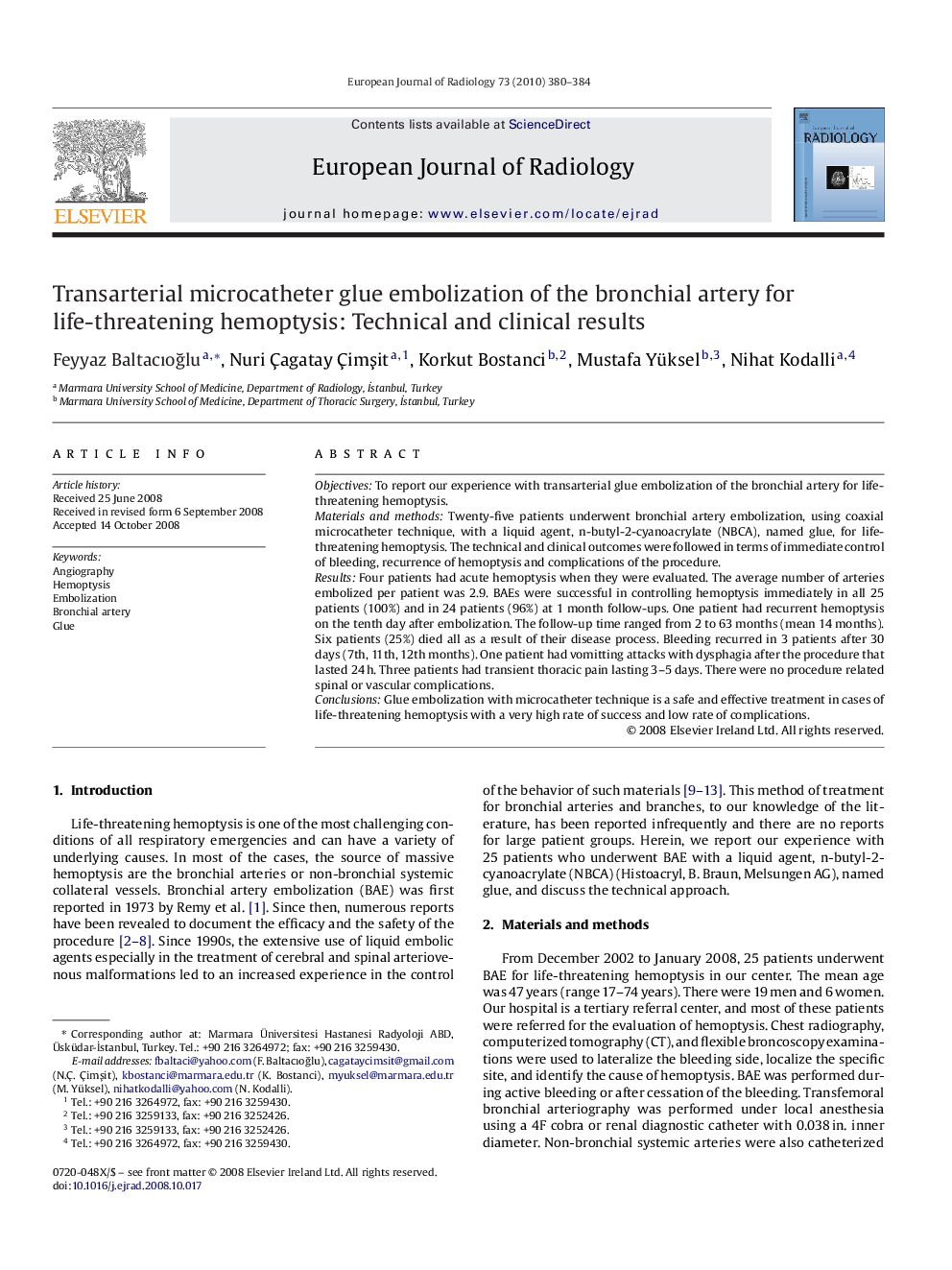| Article ID | Journal | Published Year | Pages | File Type |
|---|---|---|---|---|
| 4226559 | European Journal of Radiology | 2010 | 5 Pages |
ObjectivesTo report our experience with transarterial glue embolization of the bronchial artery for life-threatening hemoptysis.Materials and methodsTwenty-five patients underwent bronchial artery embolization, using coaxial microcatheter technique, with a liquid agent, n-butyl-2-cyanoacrylate (NBCA), named glue, for life-threatening hemoptysis. The technical and clinical outcomes were followed in terms of immediate control of bleeding, recurrence of hemoptysis and complications of the procedure.ResultsFour patients had acute hemoptysis when they were evaluated. The average number of arteries embolized per patient was 2.9. BAEs were successful in controlling hemoptysis immediately in all 25 patients (100%) and in 24 patients (96%) at 1 month follow-ups. One patient had recurrent hemoptysis on the tenth day after embolization. The follow-up time ranged from 2 to 63 months (mean 14 months). Six patients (25%) died all as a result of their disease process. Bleeding recurred in 3 patients after 30 days (7th, 11th, 12th months). One patient had vomitting attacks with dysphagia after the procedure that lasted 24 h. Three patients had transient thoracic pain lasting 3–5 days. There were no procedure related spinal or vascular complications.ConclusionsGlue embolization with microcatheter technique is a safe and effective treatment in cases of life-threatening hemoptysis with a very high rate of success and low rate of complications.
